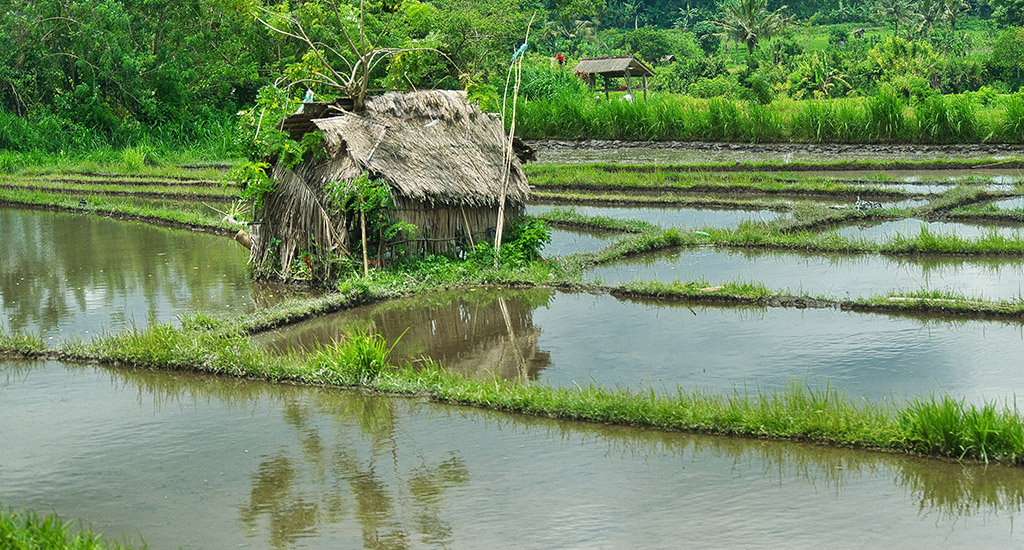
Devastating floods the latest woes for Odisha’s farmers
Already battered by cyclones, Odisha farmland is now hit by floods with its farmers facing massive financial losses and hoping for government compensation.

Already battered by cyclones, Odisha farmland is now hit by floods with its farmers facing massive financial losses and hoping for government compensation.
Standing in his field, Tulu Biswal grimaced as he surveyed his flooded crops. Except for a few rice plants seen above the slush, you would not know that it was a paddy field.
The 45-year-old farmer residing in Kanti village at Pipili block in Odisha’s Puri district has been cultivating paddy in his five acres of land for the past two decades.
He’s one of the village’s 300 farmers who grow paddy and vegetables for a living.
“Heaps of wet sand now covers my paddy field,” said Biswal, his voice choking with emotion.
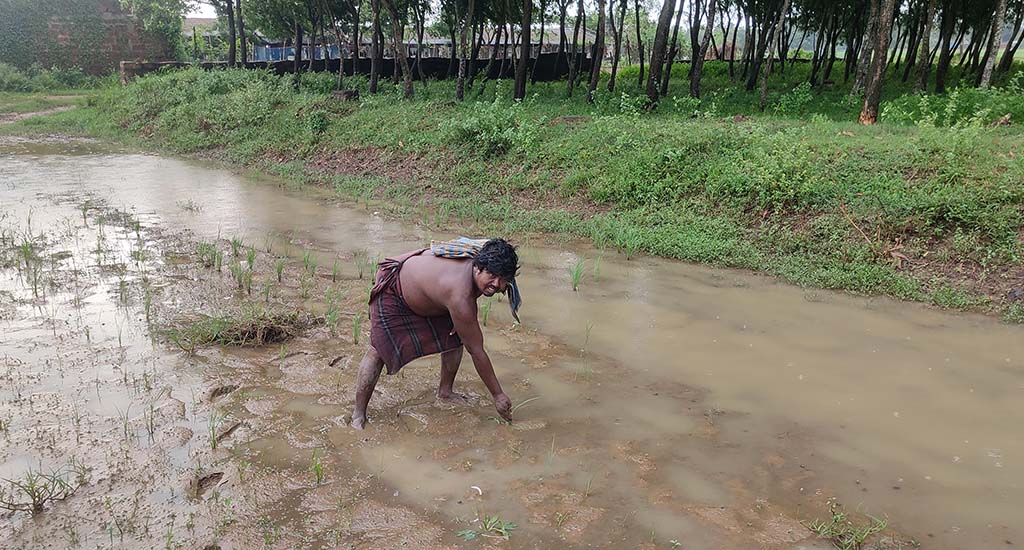
And it’s just one of the many misfortunes Odisha farmers have faced in the last few years.
Coupled with the release of excess water from the dams, the August rains wreaked havoc in 24 districts of the state. Puri, Angul, Sambalpur and Bargarh districts have been badly hit.
There clearly seems to be a lack of co-ordination between the two state governments regarding the release of water. We have suffered a lot as a result.
Narayan Kheta
Villagers say that the flooding was caused after the water level of nearby Daya River – a tributary of the Mahanadi – rose and entered the fields, flooding the entire area in mid-August.
“From media reports we learnt that the incessant rains in the state of Chhattisgarh forced the authorities to release excess water from the Hirakud dam across Mahanadi,” said Binay Das, 52, a farmer in Pipili block. “This led to flooding in downstream areas and Daya River and finally our fields.”
Government officials admitted that heavy rains and opening the sluice gates to release water proved to be devastating for the farm lands.
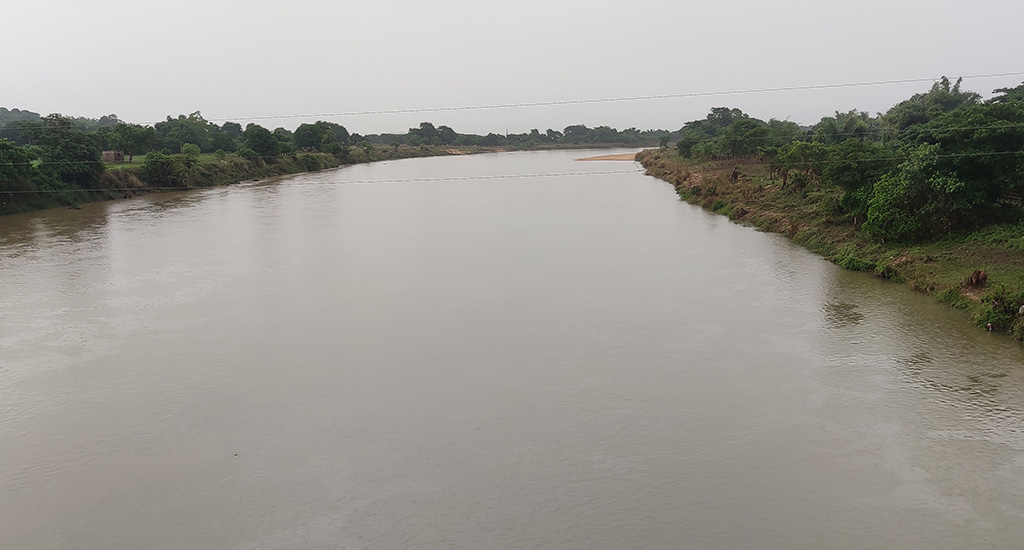
“There clearly seems to be a lack of co-ordination between the two state governments regarding the release of water. We have suffered a lot as a result,” Narayan Kheta, a farmer, told Village Square.
Many farmers said they had never witnessed such massive floods in the past four decades.
“We still remember the severe floods of 1982 when we were young. But this time the water reached till our neck. We had to go by boat to see the condition of our crops,” said Kheta.
The state government officials said that 1,614 hectares have been destroyed of the total 18,000 hectares of crop land in Pipili block alone.
“In addition to other losses across the state, about 33% of crops spread over 1.26 lakh hectare has been destroyed,” said a senior government official requesting anonymity.
According to the official, 5,036 hectare crop land was sand cast because of the flood.
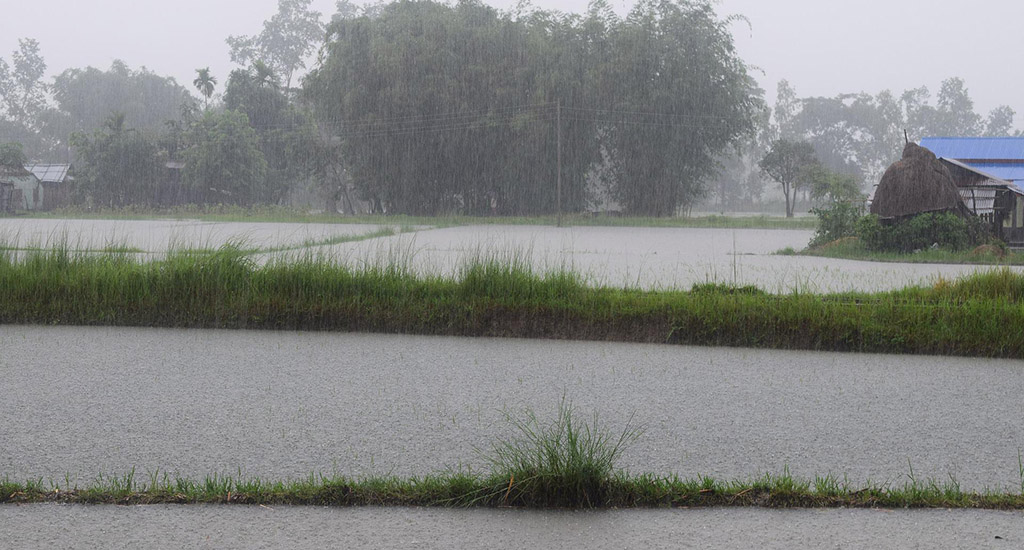
“I come to the field every day, only to end up looking at my dead crops,” said Kheta, breaking down in tears.
Biswal had taken a loan of Rs 90,000 from a local bank for farming.
“Since the floods have washed away everything, I can’t repay the loan. It’s beyond my capacity,” he told Village Square.
Kheta, who has three acres of land, had taken Rs 50,000 loan from the local co-operative bank expecting a good harvest.
“I took the loan in July during the sowing season at an annual interest of 8%. I was expecting a good crop. But the floods have turned my farm into a sand field,” he said.
Though a few crops are standing, he fears that it would amount to nothing.
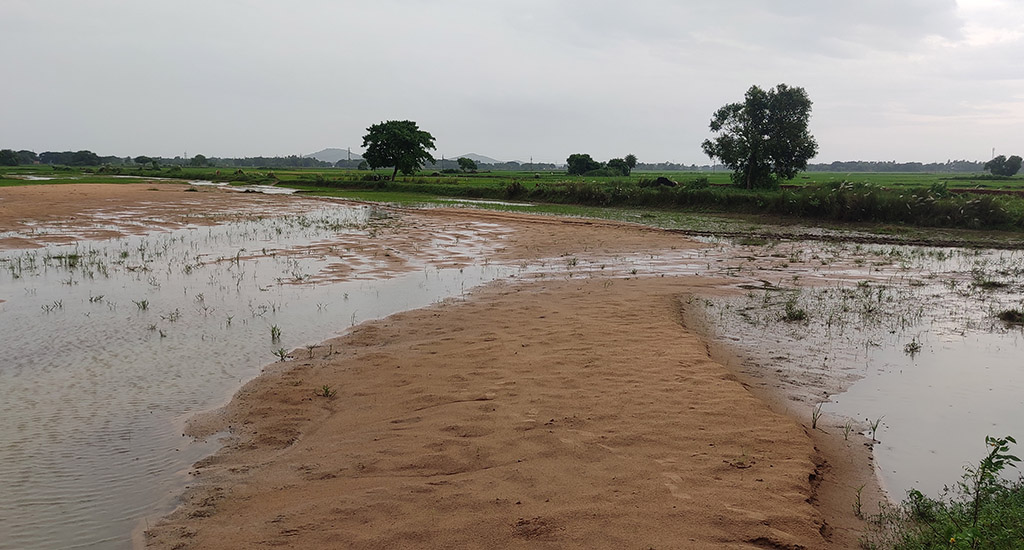
“We cannot hold the harvested paddy for long as most of us can start the work only with loans and we have to repay the banks or the private money lenders, who charge high rates of interest,” said 64-year-old farmer Halto Kishore Behera.
It is all the more difficult for the farmers to recover since this is one of the misfortunes they have endured in the last few years.
Many farmers rued that they were yet to recover from the loss they suffered during Cyclone Fani in 2019 and then the pandemic-induced restrictions. The floods have come as a major blow.
“Farmers had also suffered losses in the Jawad cyclone last December. This year 38 villages faced the brunt of floods in the block,” Jayalaxmi Sahu, assistant agriculture officer, Pipili block, told Village Square.
Surendra Samant Roy, 48, a farmer in Kanti village said that several farmers were yet to receive compensation for the losses during Fani and that the floods have added to their woes.
“We are at the mercy of nature. Frequent natural catastrophes tear us apart both mentally and financially,” said Roy.
Farmers like Halto Kishore Behera, 64, find farming becoming increasingly unviable.
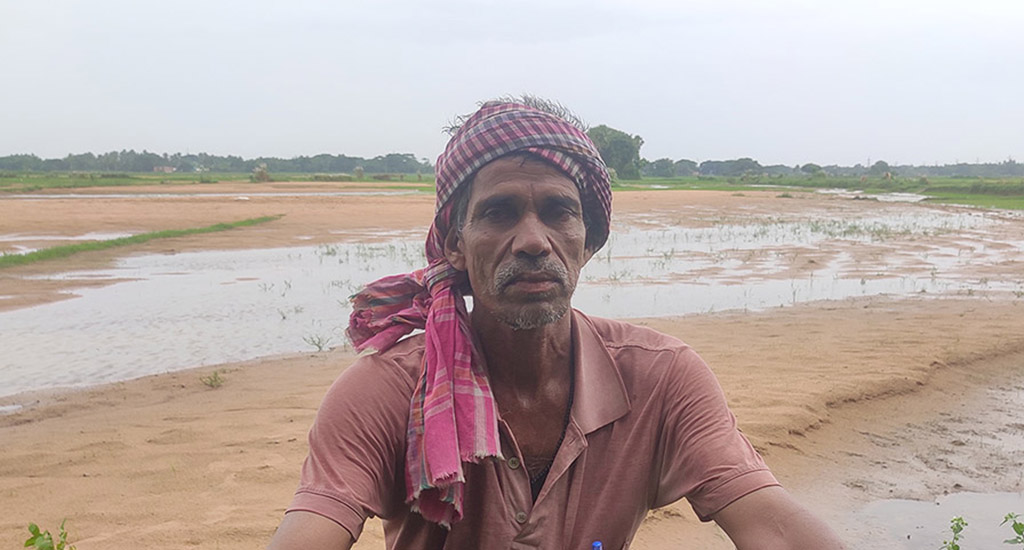
“The steep rise in the cost of raw materials like seeds and fertilizers along with labour cost mean less returns for the farmers. Paddy production per hectare costs around Rs 15,000 but we get only Rs 13,000 and sometimes even less,” Behera pointed out.
Disheartened by regular losses – and climate change adding to their woes – farmers’ children are switching to other professions.
“My sons have already shifted to other states and are working there. They don’t want to do farming because of the losses. Climate change has further made us vulnerable to natural disasters that occur frequently,” Behera added.
Biswal, however, wants just a small compensation to start life afresh.
“We have already lost our paddy crops and have the burden of repaying the loan unless the government announces a waiver. I just want some compensation from the administration so I can feed my family,” he said and walked away as the sky turned black again signalling a heavy downpour.
The lead image shows the submerged fields after incessant rains (Photo courtesy Steve Douglas, Unsplash)
Gurvinder Singh is a journalist based in Kolkata.